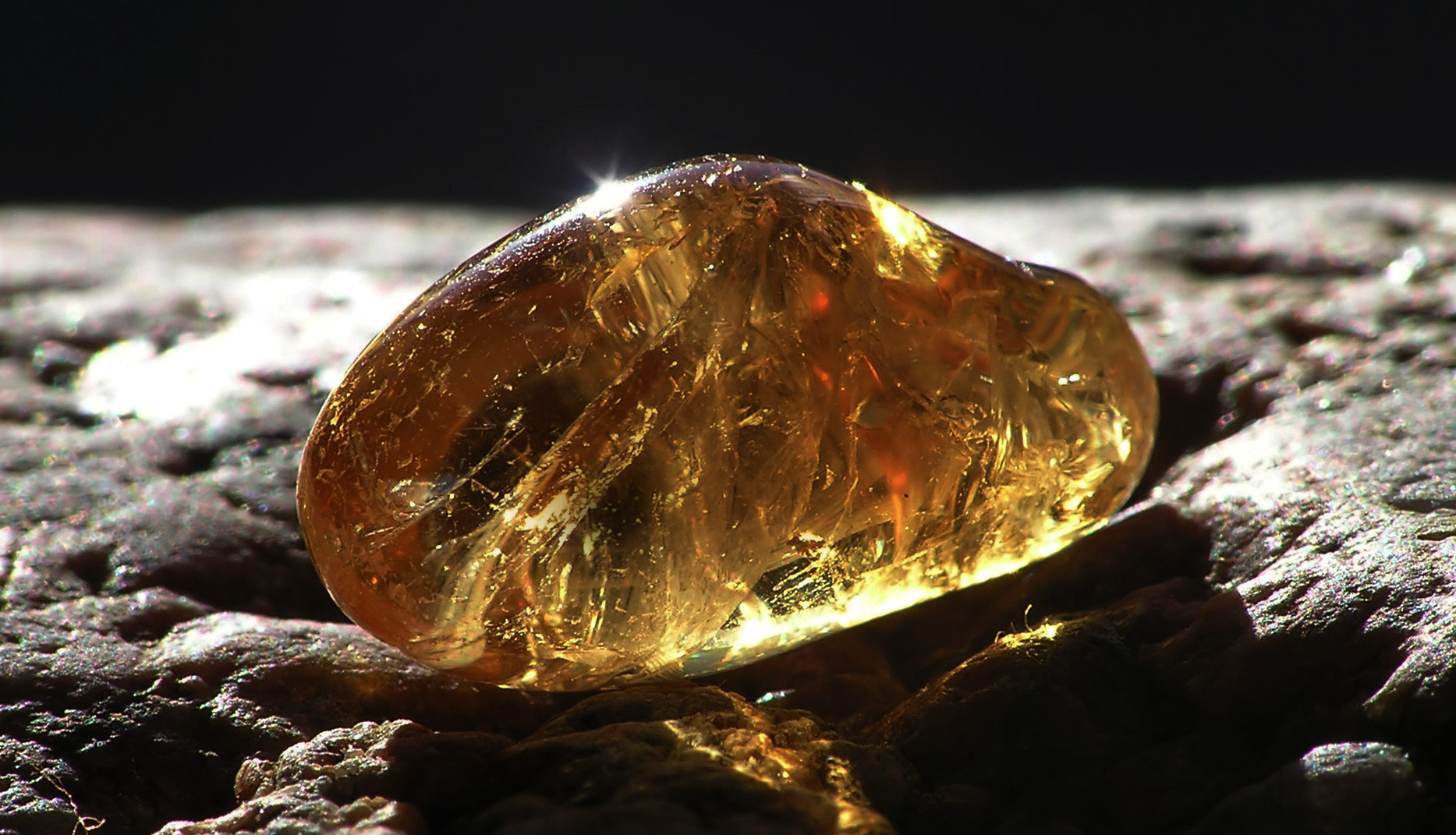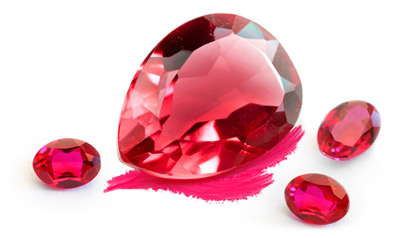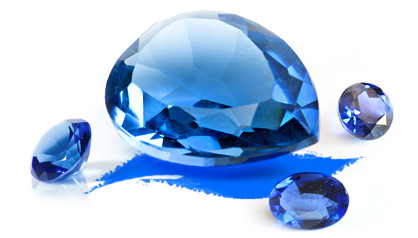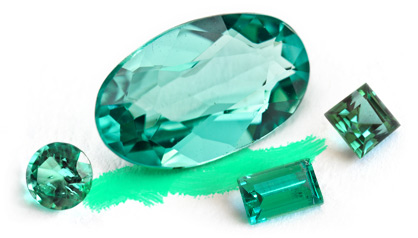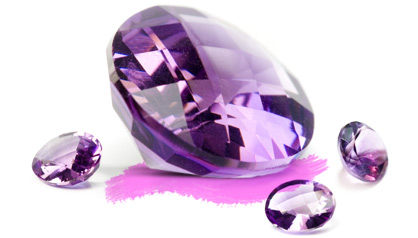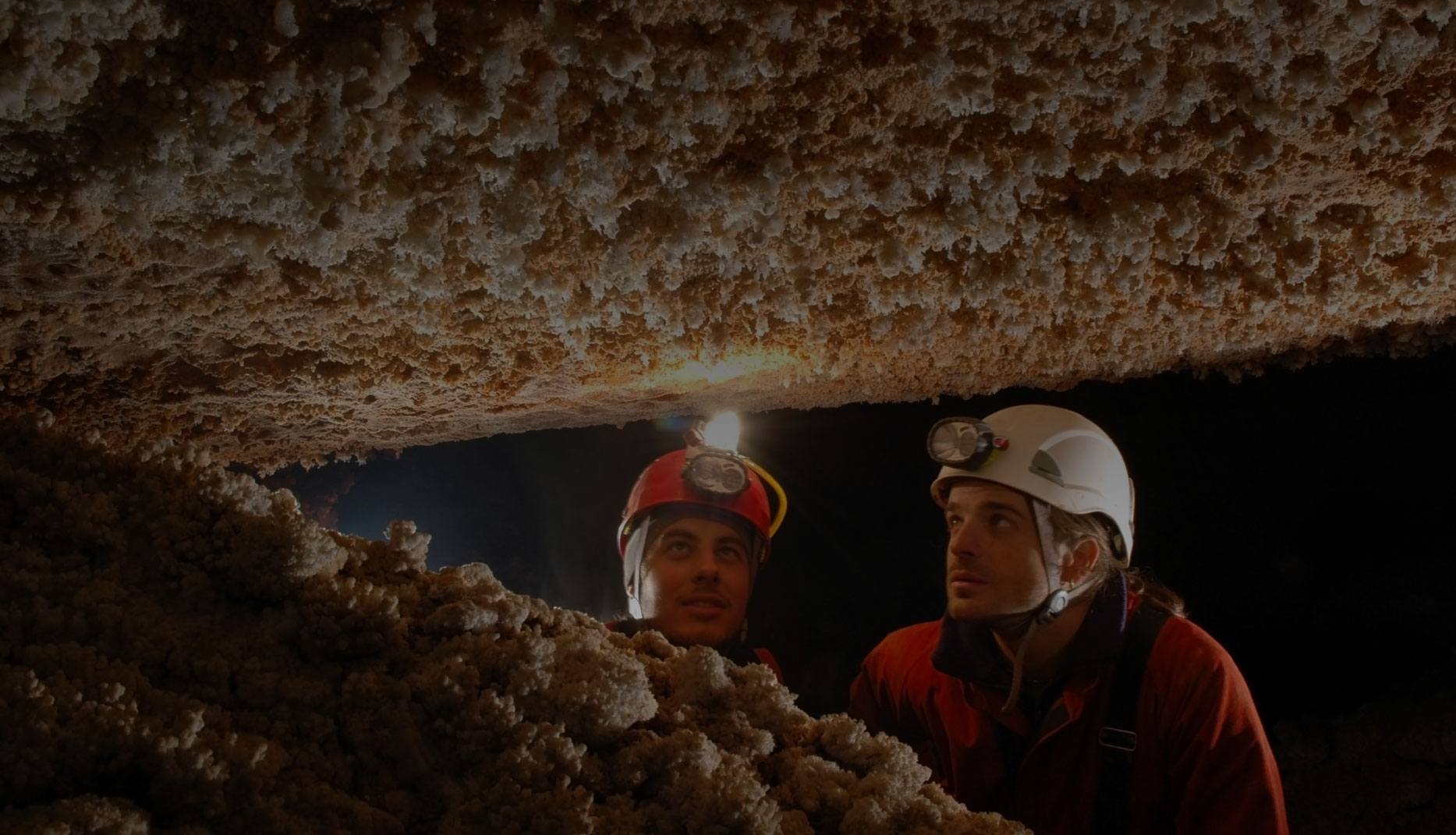No golden colored gemstone is more famous than the bright yellow variety of quartz. Citrine ranks as the most well received yellow stone on the marketplace today, mainly due to its history, beauty and widespread availability. Most dealers of this gemstone acquire it from heat-treating amethyst, which is a staple source of the world’s citrine supply. Naturally occurring citrine usually does not reach the same intense levels of saturation, and can often be seen with a tinge of modifying color, such as green or brown. The majority of citrine products today are a result of extensive Brazilian mining and treatment sciences, which make color alteration and improvement possible. Samples of the finest citrine can make it to high-mid market or designer-level jewelry as well, encompassing almost all tiers of the trade.

Citrine as a Timeless Gemstone
It is known to the trade that natural, yellow citrine can in fact be found in certain parts of the world, such as remote localities in Spain, France and Hungary. This gem variety may not have grown to its current fame though, if not for the amethyst-sourced stones from Brazil. Many people say that a European demand for citrine started in the early 1930’s, when overseas workers from Idar-Oberstein (Germany) sent citrine and quartz products back to their homeland from Brazilian provinces. Reddish or orangey citrine is currently considered to be the top-tier of the gemstone’s color ranking, however there are many who might also prefer the lighter, daffodil colored stones as well. Much of citrine’s color preferences are due to personal tastes among consumers.
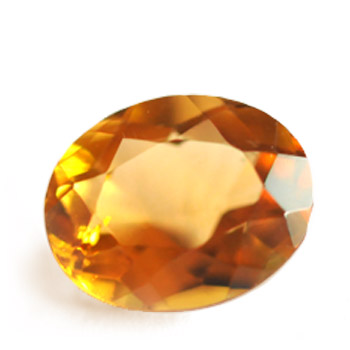
Golden Quartz
Citrine has many names in the trade, such as lemon quartz and golden quartz. It is also often mistaken for yellow topaz.
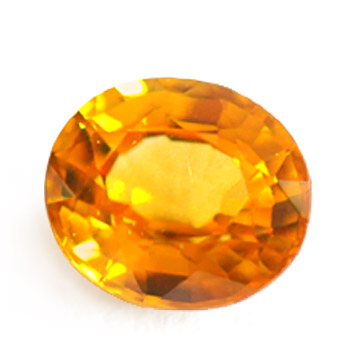
Warmth of Colors
A majority of citrine stones range in color from yellow to orangey yellow, however some can have tinges of red, brown or green.
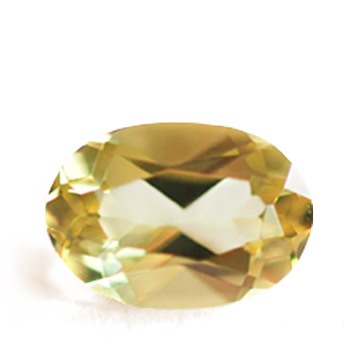
Higher Clarities
Quartz is classed as a type I gemstone, which means it tends to be more eye-clean when compared to other gemstone species.
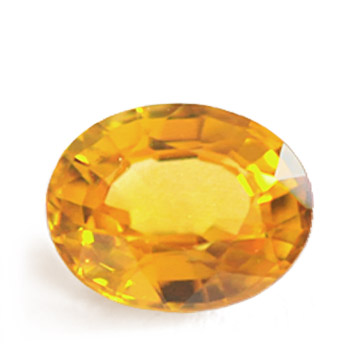
The Citron Fruit
The first reference of citrine color was adapted from the yellow citron fruit. Today, it is mainly used to describe the yellow variety of quartz.
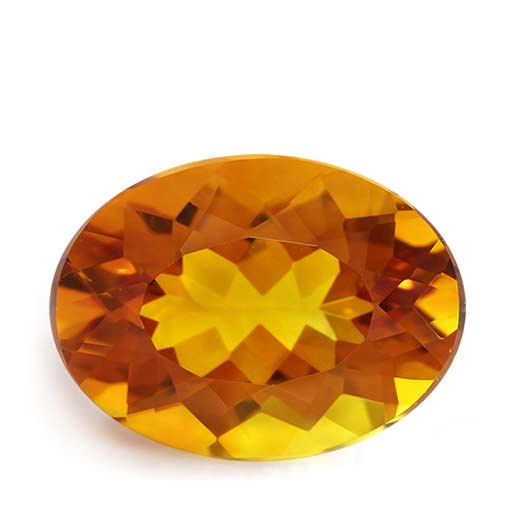
Heat Treatment
A very large percentage of the world's citrine production comes from the heat treatment of amethyst crystals.
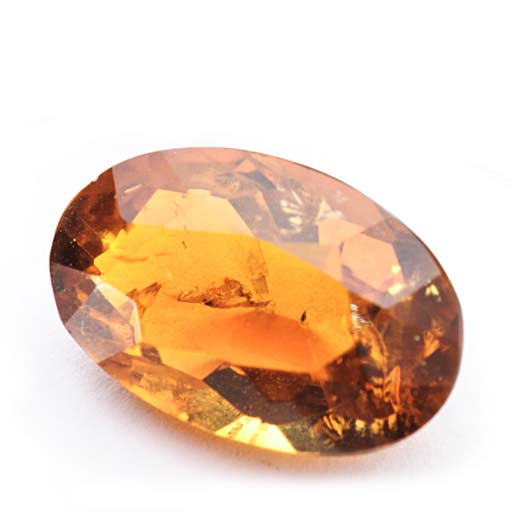
Rio Grande Do Sul
Much of today’s citrine originates from the Rio Grande do Sul state of Brazil, as well as other quartz-rich localities in the country.
"The jewelry industry prizes several varieties of gemstone that occur in the yellow color range. Among them, citrine is far from the most expensive, but its affordability and availability has indeed caused the public to receive it very well. Quartz jewelry is quite common in middle to commercial retail establishments, with amethyst and citrine moving higher up the demand scale of colored stone aficionados. Many of these collectors also prefer the raw, untreated hues of citrine. These colors can be described as greenish or brownish yellow, usually with a lighter tone to them. The more frequently seen citrine on the market (amethyst-heated) may be described to have more of a darker, orangey color that some compare to that of Baltic amber."
Citrine’s relationship with amethyst is quite significant. A variety of quartz called ametrine has been popularized in the market as one of the most beautiful bicolored gemstones. The name refers to a quartz piece that has both amethyst and citrine portions (usually in halves), and provides consumers with the appeal of both beautiful gems. Market-wide reception for quartz has risen strongly since the discovery of large-scale resource deposits in many Brazilian localities. Some neighboring countries like Uruguay are also contributors to the worldwide quartz supply.
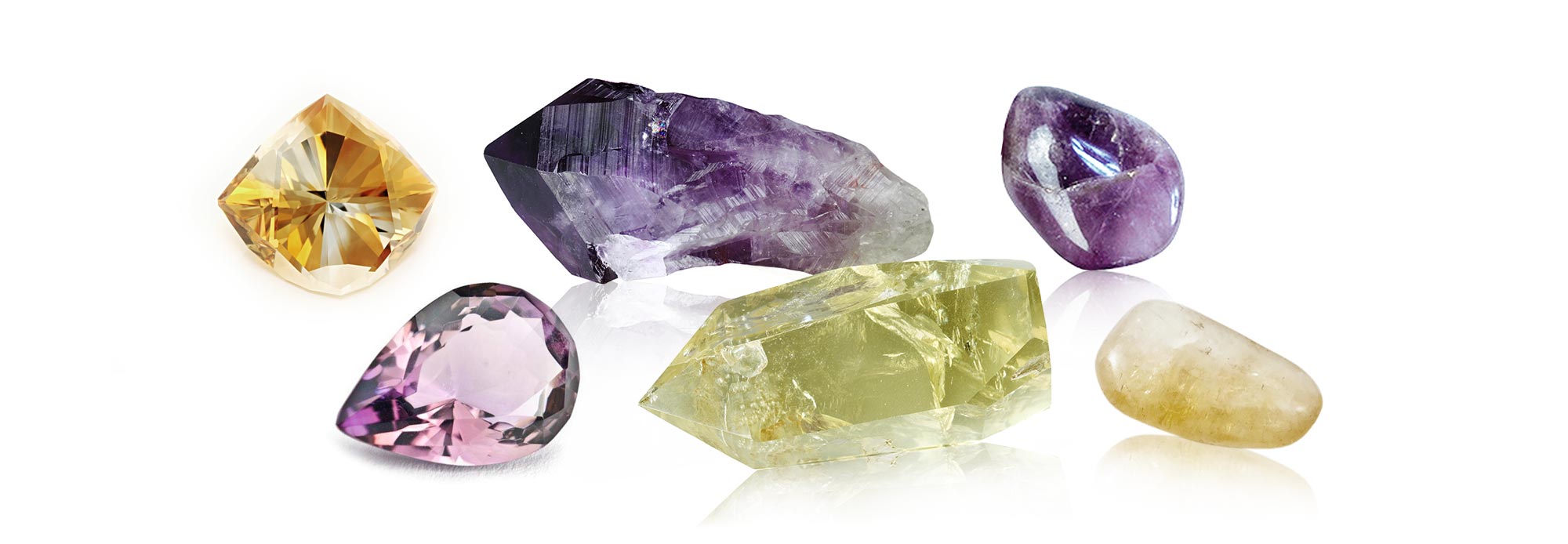
While citrine may not be the most famous quartz variety, it does hold fame for being the most well known yellow-colored gemstone. Many alternatives include yellow sapphire, golden topaz and yellow diamond, all of which would normally command much higher prices compared to an equivalently beautiful citrine piece. The trade prioritizes the commercial-quality levels of citrine more evidently these days due to a majority of the market being concentrated in this area. Most retailers move citrine merchandise quite regularly at this tier, however some high end brands and design houses also specialize in the craftsmanship of freeform-cut citrine. These would be very intricately cut stones that are made to display an innovative optical play on light-return, utilizing citrine’s high tendency to occur in very good transparencies. Gemstone cutting competitions will usually receive a high amount of citrine entries, along with other pieces crafted from amethyst, aquamarine and topaz. Citrine popularity also seems to stem from many traditional beliefs. The golden color for example, alludes to prosperity and wealth in some Asian cultures. Households in eastern countries might occasionally have citrine pebbles on shelf, in the hopes that they may attract abundance and give clarity to any financial decisions made by the family. Though many of these beliefs differ due to the diversity of our global cultures, some have a positive effect on the mind, encouraging better thoughts and attitudes toward daily life activity. Citrine’s involvement in these traditions is an old and important part of a belief system purely based on heritage and stories. Some say that the different varieties of quartz acquired their mystical reputations from a certain special property that they possess.
This interesting property is called piezoelectricity, and is quite observable by just about anyone with a quartz crystal. It allows the gemstone species to develop an electric field upon the application of mechanical force or stress. Quartz is used today for precise instrumentation movements, such as those of a clock. The accuracy of this property’s effect is what makes it so efficient in many industrial utilities. Citrine, amethyst and smoky quartz all have the trait of piezoelectricity. Some other gemstone groups may also exhibit similar or same properties as well.
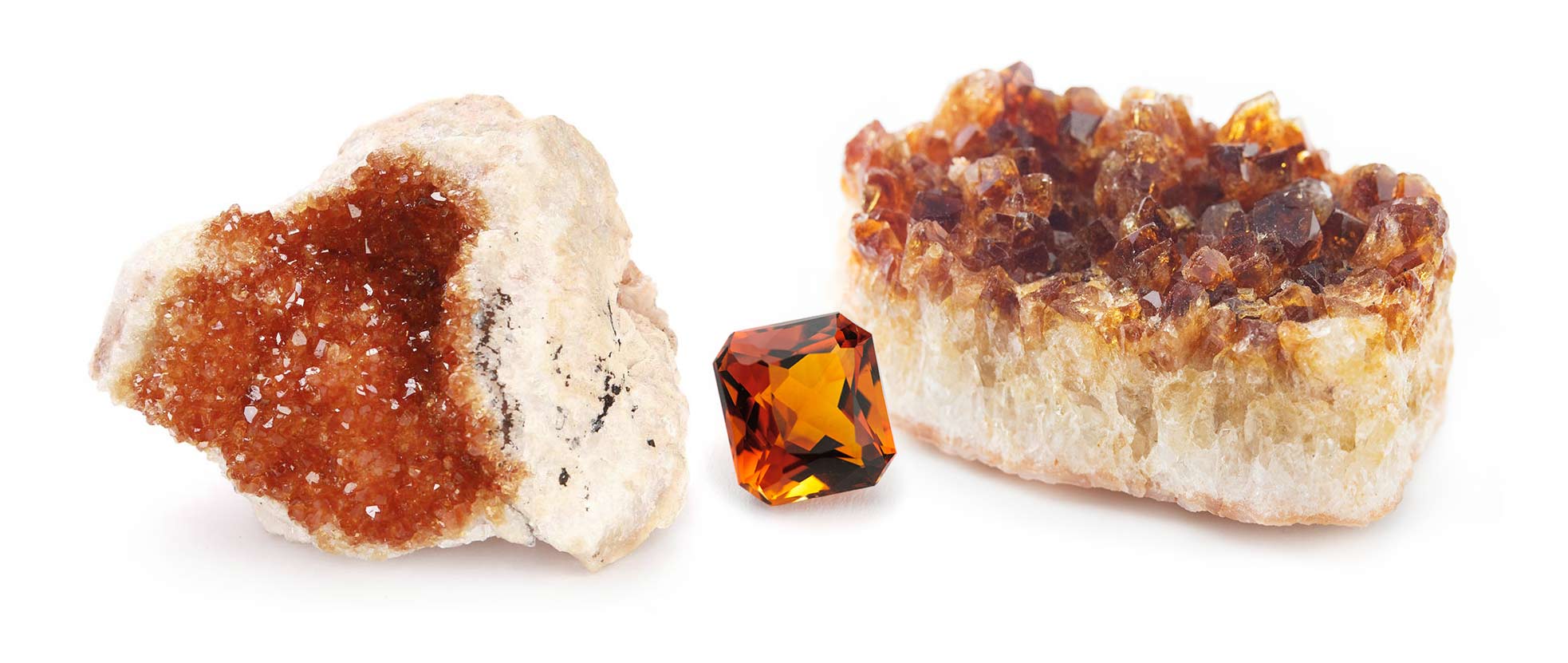
Quartz varieties do quite well when used in jewelry. The moh’s hardness rating for citrine would be a 7 on the 1-to-10 scale (10 being the hardness of diamond). This scale measures a gemstone’s ability to resist abrasion and scratches. Since citrine quartz is composed of crystalline silicon dioxide, it is able to showcase a relatively good durability when compared with many other gemstones. The crystallographic structure possesses no cleavage directions, which increases toughness (resistance to breakage). Likewise, citrine can resist heat fairly well, although color-alteration is very probable in high temperature scenarios. Many of citrine’s alternative gemstone choices like topaz and amber have some durability concerns that might need more careful attention. Topaz’ basal cleavage direction requires it to be handled well without being struck at certain points. Amber is soft and can be scratched by harder materials like glass or other gemstones. Other alternatives like yellow sapphire display a slightly better hardness and durability ranking, but cost significantly more than citrine.
Caring for Jewelry Items and Evaluation of Gemstones
Due to citrine’s hardness and durability, it doesn’t require much extra care compared to most other gemstones. Just make sure to keep each stone in its own individual compartment (if loose), or at least keep it out of contact with other gems. Cleaning can be done with mild, soapy water and a relatively soft brush. Do not use water that is too hot, due to the risk of thermal shock. This can cause some inclusions in the gemstone to burst or rupture, increasing the presence of fractures. Room-temperature or lukewarm water is best for cleaning purposes, so that the stone’s interior will not be under risk of alteration.
Jewelry Repair
Be aware that most citrine stones in the retail marketplace acquired their color via heat treatment, and so additional exposure to heat (from a jeweller’s torch) may change color or saturation levels again. Many citrine gems that possess surface-reaching fractures should also be taken out of their mountings before jewelry repair.
Frequently Asked Questions

How does citrine rank in value compared to other quartz varieties?
Given equal quality levels, most would say that amethyst is usually the most expensive quartz variety, followed in suite by citrine, smoky quartz and rock crystal (colorless) quartz. The possible exception to this ranking scheme would be those quartz stones with rarer inclusions, such as phantom growth shapes or golden rutile needles.
Is citrine usually treated before wholesale?
The only common treatment that citrine undergoes is the heating process that gives it the golden yellow hue we are all familiar with. This allows people to change some amethyst crystals into citrine crystals. Not all pieces react the same way though, many in the trade say that a crystal’s saturation levels are carried over during the variety transformation, so there is still a rarity scale that governs gemstone color quality.
What are ametrine gemstones?
When a certain quartz gem possesses both purple and yellow zones of color, we refer to that specific variety as ametrine. This gemstone is popularly used in collaboration with many growing fashion trends and seasonal designs. Its color scheme can actually be induced via the partial heat treatment of some amethyst stones, allowing only a portion of each stone to be exposed to high temperatures. Some natural ametrine can also be found in certain places, like the quartz mines of Bolivia.
How do you evaluate citrine color?
A majority of the trade believes that the finest citrine color is dark orange or reddish yellow with a slightly dark tone and intense saturation level. This specification is also quite similar to the finest color range of precious amber. The preference of people plays a very big part in the marketplace. Sometimes trending changes can amass a large consumer population in favor of a different color grade, such as a lighter lemon yellow color for citrine.
What is the price difference between treated citrine and naturally occurring citrine?
Actually, almost all citrine gemstones today are products of the heat treatment process. Naturally occurring citrine is quite rare, and does not often possess an equally strong saturation level as its heated counterpart. That being said, some collectors are still willing to pay a premium for untreated citrine, which can sometimes even go for up to four times more than the price of a slightly more intense treated version. Not all buyers would agree with this valuation comparison though. There is indeed a specific market audience for naturally occurring yellow citrine, and it is still a minority compared to the much larger commercial market.
Why is citrine sometimes used for freeform cuts?
Citrine, amethyst and a host of other gemstones are often used by gem cutters to showcase artistic expressions and creative skill sets. These artisans work with materials like citrine due to the lower presence of inclusions in type I clarity stones. This allows a cutting job full freedom to render the original vision of the artist as accurately as imagined. Designer-cut stones command higher prices than traditionally cut samples, because they are usually one-of-a-kind in spatial contour, or are part of a limited series masterfully created by an individual artist. Some competition-grade pieces can even fetch values up to ten times that of a normal polished counterpart.
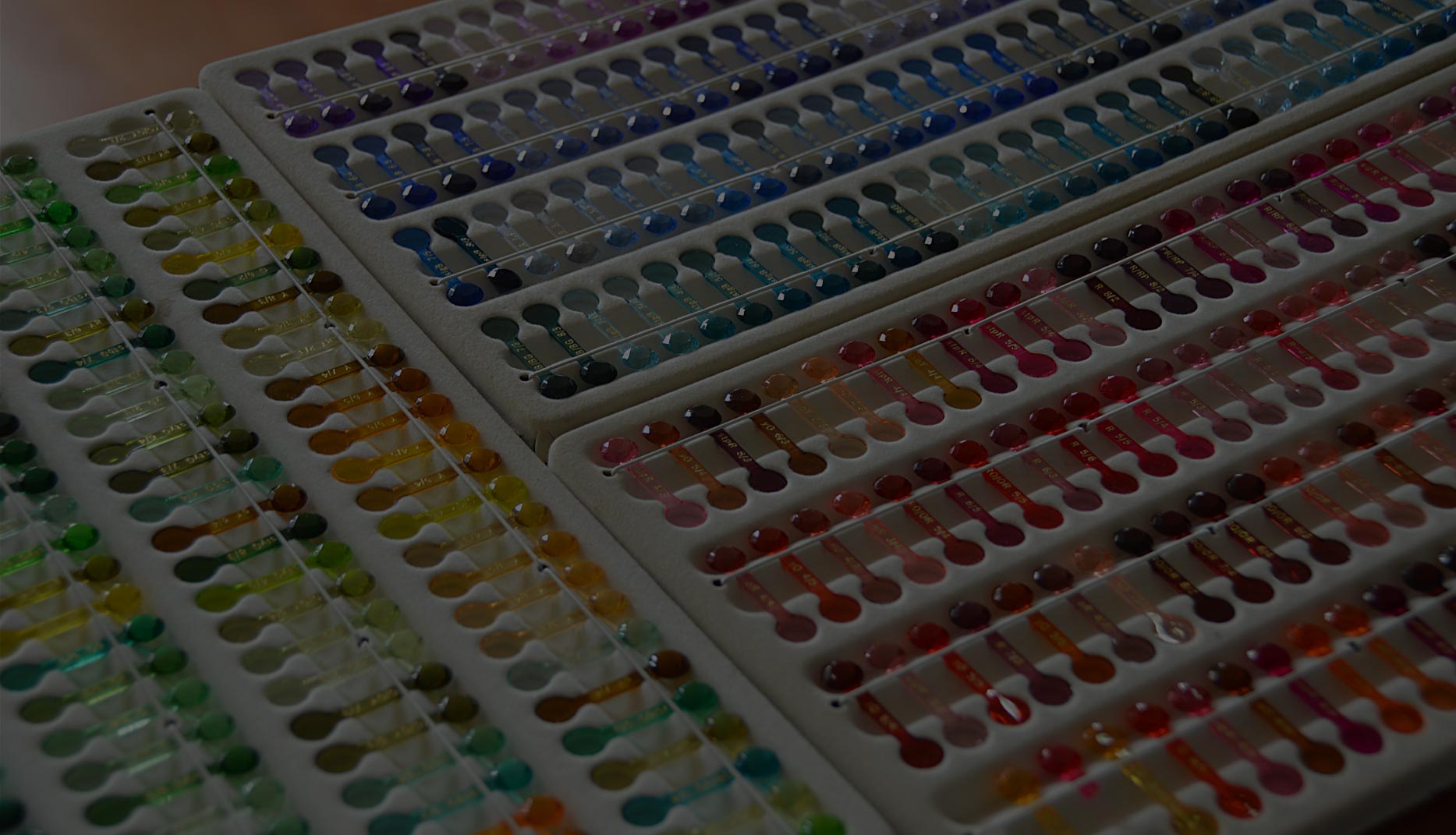
Citrine Gemological Information
Gem Species:
Quartz
Composition:
SiO2
Yellow to
Orangy Red
Refractive Index:
1.544 to 1.553
Specific Gravity:
2.66 (+0.03/-0.02)
Hardness:
7 (Mohs)
Gemologist's Lab Notes
The Scientific Identification of Citrine
Citrine is a gem variety that belongs to the second most abundant mineral species on the earth’s crust; quartz. Its structural growth crystallizes according to the trigonal crystal system, and it is also classified as an anisotropic mineral. Most common specimens are found as clusters of six-sided prisms, terminating in a distinctive pyramid form. Some other occurrences of citrine might be described as drusy to fine-grained masses of crystal clumped tightly together. Larger individual crystals are a bit more rare, but also frequently seen on the markets.
A citrine gemstone derives its yellowish to brownish color from the presence of iron impurities in its crystal lattice. Most are products of temperature-based alteration, using other varieties such as amethyst and sometimes smoky quartz. As a member of the quartz species, citrine has a commonly seen refractive index of 1.544 to 1.553, allowing the viewer to also check for a birefringence value of around 0.009. The presence of birefringence tells us that this variety is doubly refractive (anisotropic) as well. Another characteristic sign of the quartz gem species is the presence of something called a “bull’s eye” optic figure, which can be described as a circle at the center of a black cross-like pattern. This can be observed by viewing the crystal under crossed-polars and with the help of a conoscope (or optic figure sphere). With the addition of a quarter wave plate, one could also see the “Airy’s Spiral” pattern, which resembles a basic pinwheel look, utilizing black bands. This pattern can be described as either left-handed or right-handed, depending on the orientation of the figure. Many quartz stones are quite easy to identify using a polariscope and some gemological equipment.
Citrine Characteristics
Determining if a citrine stone was produced by artificial heat treatment or unearthed naturally can be very taxing, and not always worth the cost of advanced instrumentation. Some gemologists note that naturally mined citrine usually has a much more cloudy interior, as well as a slight greenish tint. Comparatively, the treated citrine gems produced from smoky quartz or amethyst will often be more transparent, and can sometimes exhibit traces of their previous variety. Many amethysts originally show very distinct angular color zones, which can stay put even after heat-treatment turns them yellow. Of course the zone colors will also change respectively, but the lightness and darkness of these areas may remain distinct and observable. Some people note that heat-treated products may show small lines when viewed using a 10x triplet loupe.
What is Synthetic Quartz?
Man-made quartz (a.k.a. synthetic quartz) is basically any variety of the mineral species that has been grown in a laboratory by artificial means. These products may also be exposed to irradiation and annealing processes to re-create the colors of some varieties like amethyst and citrine. The majority of synthetic quartz gemstones that are currently on the market have been created using the hydrothermal synthesis process. This method can be relatively costly and time-consuming compared to the other techniques often used in the synthesis of minerals like corundum. Some usual evidences of hydrothermal creation are the presence of a “seed plate”, directional “nail-head” spicules, or tiny “breadcrumb-like” inclusions. Laboratory instrumentation may be required for full checking procedures.
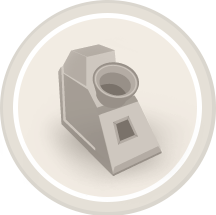
Consistent Birefringence
Quartz varieties in general have a very easy-to-spot birefringence value that can be read on a standard gemological refractometer. Use a basic polarizing filter to see both end-values clearly, by rotating it ninety degrees for every transition.
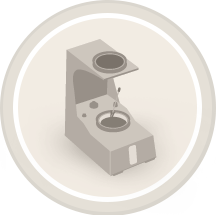
Bull’s Eye Optic Figure
Citrine usually displays a bull’s-eye looking pattern when viewed under crossed polars using a conoscope. This type of optic character pattern is quite determinative of the quartz species, but does not necessarily differentiate against synthetic quartz.

Color Zoning
Many of the citrine gemstones that were originally unearthed as amethyst will show some degree of angular or straight color-zoning. This may be feint to strong, or at times nearly invisible. The resulting effect is purely dependent on the original specimen and sometimes the treatment specifics.
Qualities, Value and Demand
Citrine generally belongs to the commercial market sector, but can sometimes transcend to the high-mid market consumer trade. This is usually only for truly exceptional stones or custom-cut freeform gems that have either art or historical value. Other than these, most gems are purely valued on their color, cut, clarity and carat weight traits.

There are many reasons why people all over the world covet beautiful citrine crystals. Their vibrant, almost solar colors often uplift the spirit and moods of a wearer. Citrine has been an interesting part of several cultural and traditional habits at the family/communal level. The Asian movement of feng shui contributes to the region’s high demand of this quartz variety, due to the fact that many practitioners believe in the diverse revitalizing powers of the gem. They will often speak of citrine’s effect on the self-esteem and energy flow of an individual, as well as its influence on the aspects of wealth and abundance in a household. One may notice that tumbled citrine items are quite a common sight in the homes of Chinese families. Some say that these illustrious pebbles can encourage an unconventional cure for wealth issues, and that placing them in important locations around the house can fix a family’s money troubles. Often times, tall citrine towers, crystal clusters or even intricate “money tree” sculptures are considered popular living room displays in many eastern countries. The jewellery market in these places also has a prime eye on the demand for commercial citrine wearables. One of the most popular items in many recent trade fairs would be the basic citrine bead bracelet, which consumers and retailers alike will frequently bargain for.
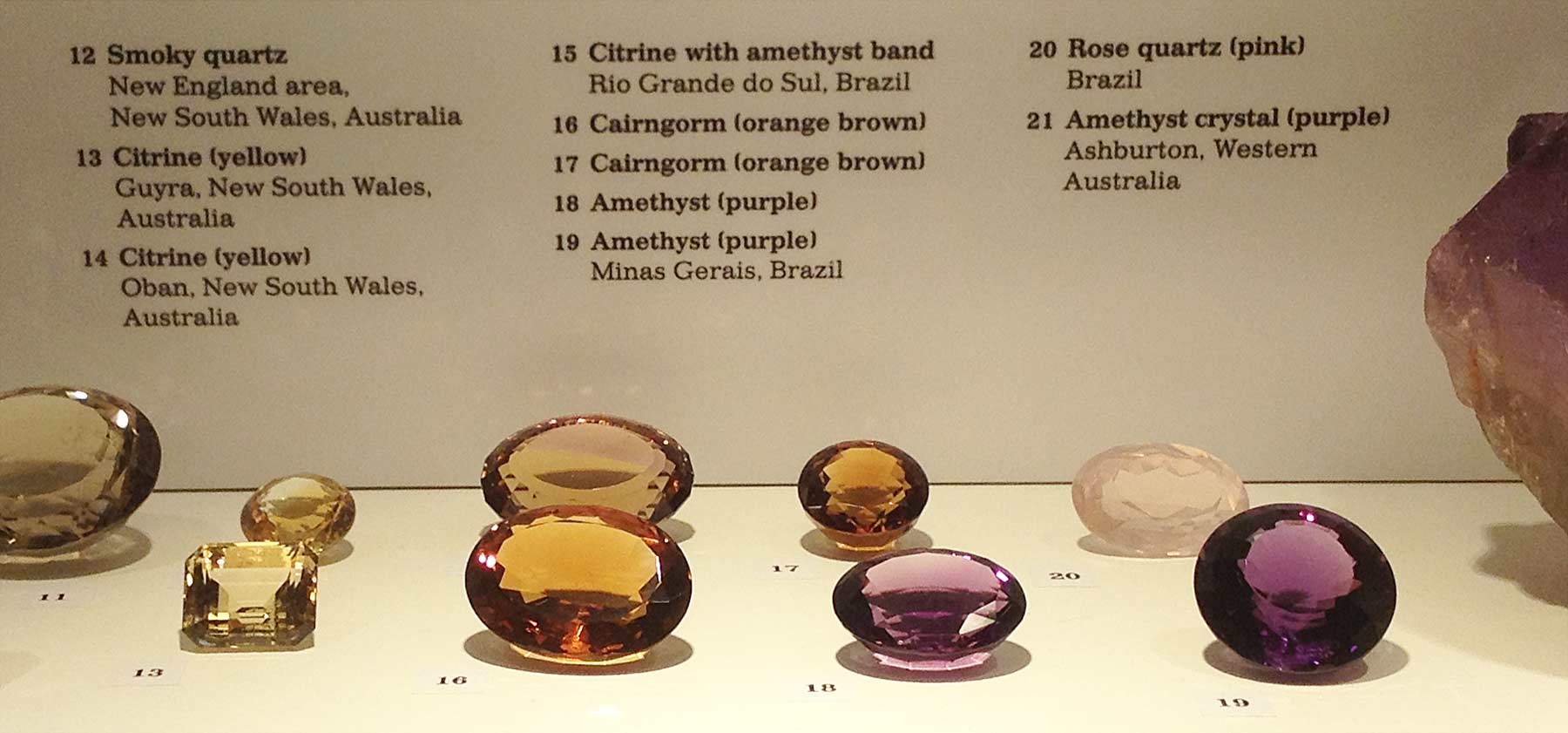
The American National Association of Jewelers decided to designate citrine as the birthstone of November back in 1912. Its popularity has grown considerably since the first productive years of Brazil’s involvement in the quartz supply chain. Being able to amass large quantities of beautiful raw amethyst crystals allowed the newly accepted heat-induced citrine transformation processes to come into full fruition, and so a large portion of the country’s amethyst output was dedicated towards the production of burnt-umber to orangey yellow citrine for the markets. By the time the new supply had reached the international trade fairs, the world had already developed a demand for the golden newcomer. The coming decades would allow for more countries to gain access to citrine rough, furthering its market applications into new directions (such as designer-cut freeform gemstones). The term "cairngorm" would sometimes be used to represent specimens of citrine (and smoky quartz) with an amber-brown tint, termed after a source in the Cairngorm mountains of Scotland that had been known to produce stones of that color palette.
Synthetics, Imitations and Treatments
Synthetic citrine, amethyst and quartz can be produced via the hydrothermal growth method. Normally these man-made versions may show some indication of their origin- such as nail-head spicules or breadcrumb-looking inclusions. It’s often required though, to send these stone to a gemological laboratory for a better validation of their corresponding identities. Due to citrine's relative affordability and widespread availability (through the heat treatment of amethyst), you won't typically see much synthetic versions on the market. On the other hand, imitation citrine is usually confined to some types of man-made glass and plastics, which are much easier to detect due to their lower thermal conductivity and amorphous structure. Imitations are much more commonly seen than synthetics for all varieties of quartz.
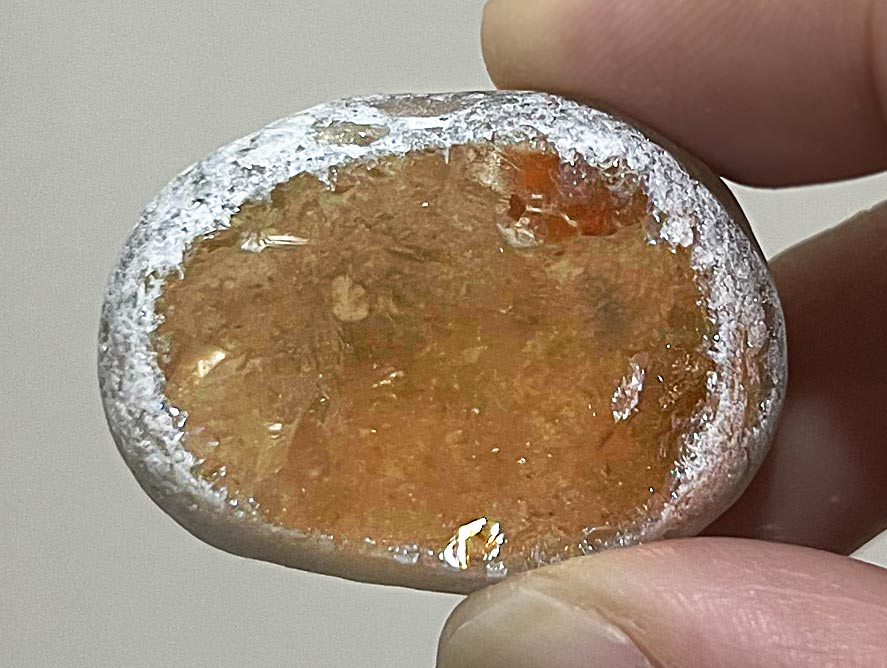
Natural | Citrine Pebble
A partially tumbled or water-worn specimen with a polished viewing windowAlthough citrine and other quartz varieties tend to be eye-clean, many samples will still showcase inclusions such as fractures and small mineral crystals.
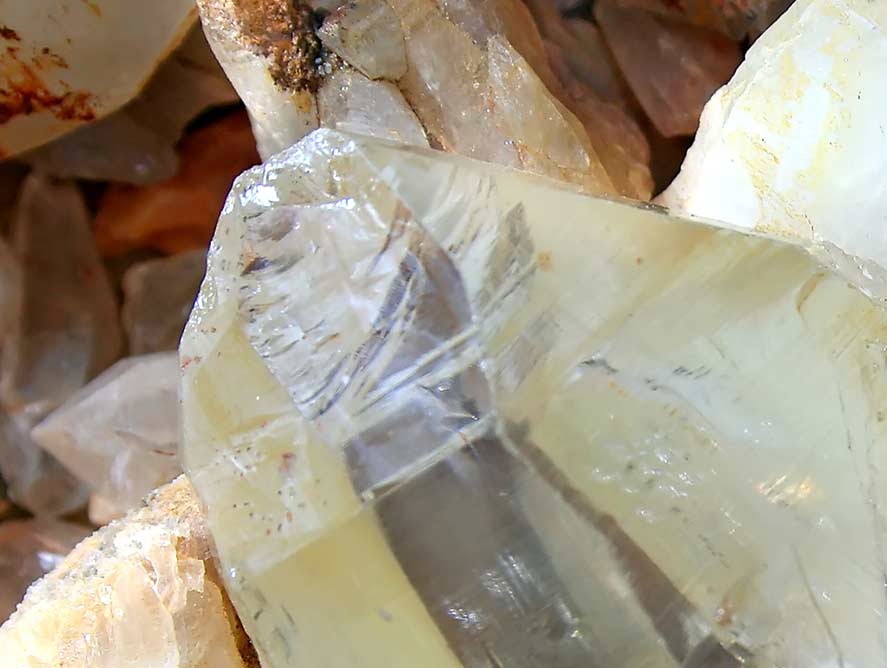
Trait | Conchoidal Fracture
A scalloped appearance on fracturesFractures on different materials can typically be conchoidal, splintery or powdery. Both citrine and its most common imitation (glass) show conchoidal fractures.
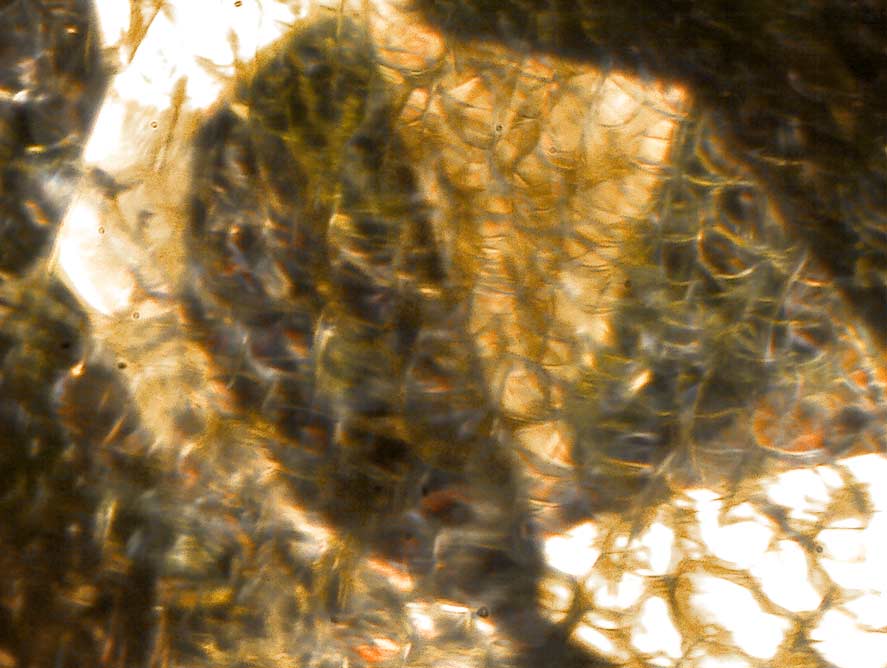
Treatment | Quench Crackling
A series of "chicken-wire" or "honeycomb" looking inclusions with color dye concentrationsQuench-crackling uses rapid heating and cooling to create micro-fractures in quartz that can be used to introduce color dye. This is often used for creating imitations of other gemstone species or even other quartz varieties.
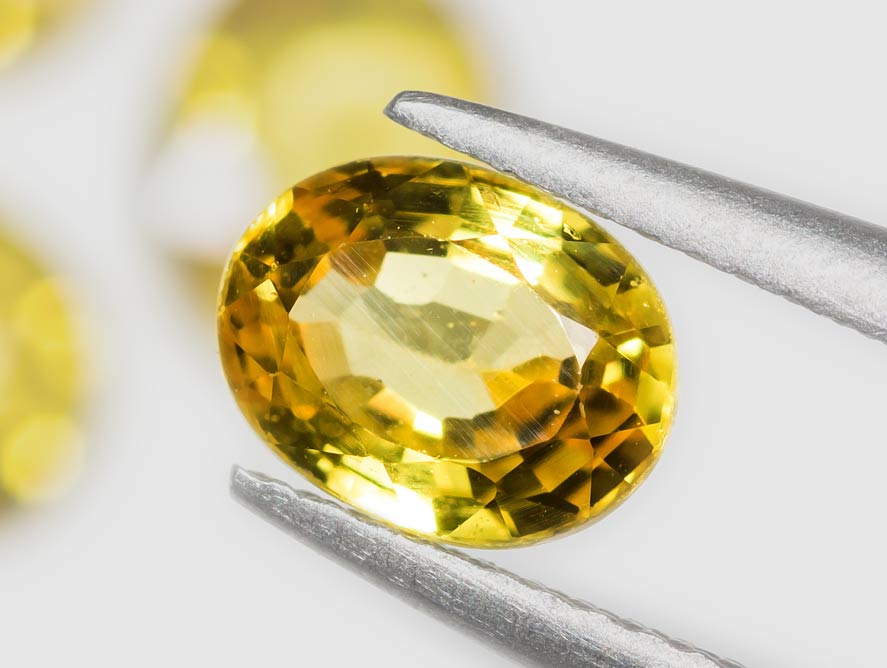
Natural | Faceted Citrine
A mixed-cut oval shaped citrine gemstoneMany colored stones including citrine, are frequently cut with brilliant-style facets on the crown and step-like facets on the pavilion. This is called a mixed-cut and can allow the gemstone to retain more weight from the original rough.
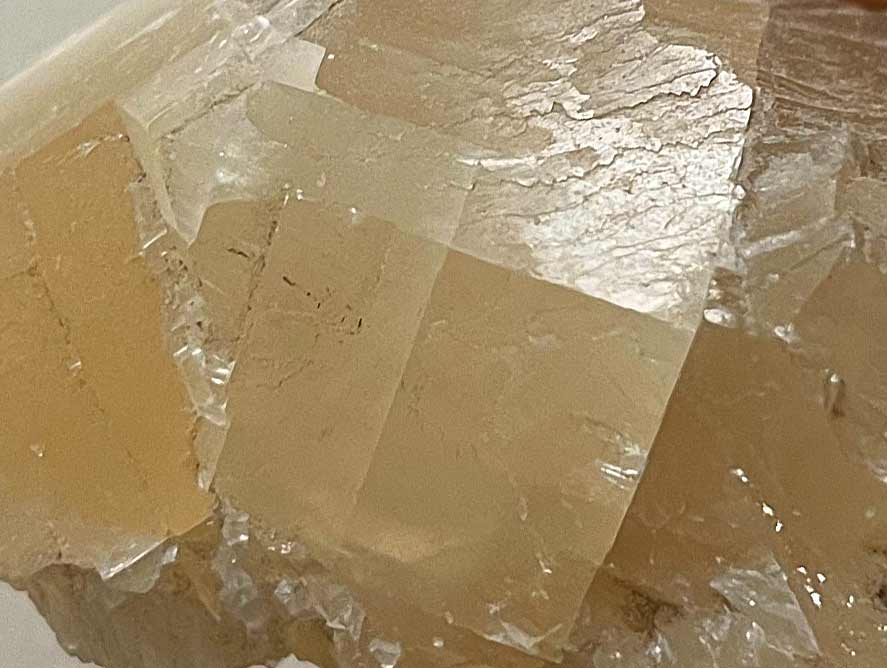
Imitation | Other Natural Gems
A crystal showing evidence of perfect cleavageMinerals such as yellow calcite and fluorite can occasionally get confused for citrine, though a tell-tale separator is that both of these have multiple directions of perfect cleavage while citrine does not.
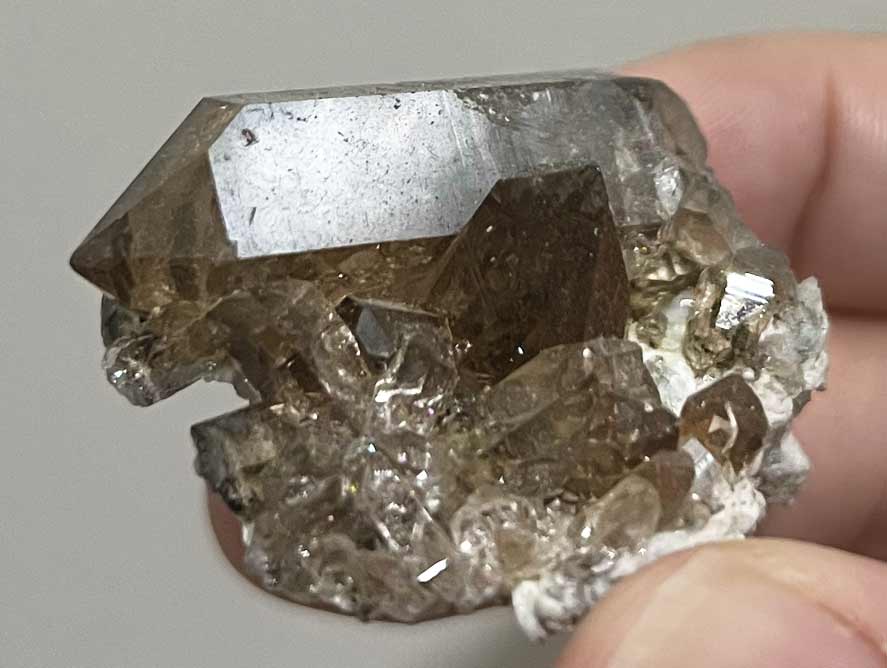
Trait | Six-Sided Prism
Characteristic 6 sided prims that terminate in a point, quartz specimenCitrine, smoky quartz, amethyst and all varieties of quartz often show up as prisms with six sides terminating in a sharp point. This crystal also shows the typical vitreous luster associated with quartz.
Contact Us
Get in touch with a Gemologist.
For gemological assessment requests, our laboratory evaluates gemstones as an impartial third-party assessor.
